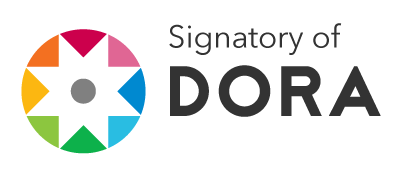Technology Management in Institutions of the Colombian Defense Sector in the Face of the Post-Agreement of Peace
DOI:
https://doi.org/10.37467/gka-revsocial.v8.2107Keywords:
Technology Management, Military Industry, Innovation, Peace Agreement, ColombiaAbstract
The Defense Sector is a sector based on technology, to the extent that it requires processes of development, acquisition and use of technological assets to achieve the objectives of its mission, aimed at guaranteeing national sovereignty and citizen security. It is a strategic sector that, mainly in developing countries, depends to a large extent on technology transfer activities, and in which the concept of dual technology (referring to the possibility of implementing both military and civil applications) is key. This paper aims to analyze the management of technology and innovation in this sector. To this end, a study was initially made on the particularities of the Defense Sector in the international scope, with emphasis on the Colombian case.
Downloads
Global Statistics ℹ️
|
519
Views
|
253
Downloads
|
|
772
Total
|
|
References
Abbott, J., Fellow, L., Devries, R., Ships, N. P. E. O., & Vasilakos, J. (2003). The Impact of Evolutionary Acquisition On Naval Ship Design, 259–285.
Applin, S. (2015). Technology and Change. IEEE Technology and Society Magazine, 34(4). https://doi.org/10.1109/MTS.2015.2499343 DOI: https://doi.org/10.1109/MTS.2015.2499343
Börjesson, S., & Elmquist, M. (2008). Aiming at innovation in the Swedish defence industry - the Difficulties of Responding To Disruptive Market Change in a Technology Driven Context. Knowledge Creation Diffusion Utilization, 1(14), 1–14.
Briones, A. J. (2009). Strategic determiners and factors of business management related to the defence industry. Tourism and Management Studies, 5, 165–179.
Colom, G. (2011). El proceso de transformación militar en España (2004-2010). UNISCI Discussion Papers, 117–131. https://doi.org/10.7818/ECOS.2014.23-2.11 DOI: https://doi.org/10.5209/rev_UNIS.2011.v27.38144
Durand-Carrier, F., & Loureiro, G. (2011). Standardization of the Technical Readiness Levels (TRL). In 62nd International Astronautical Congress 2011, IAC 2011 (Vol. 9, pp. 7082–7085). Retrieved from https://www.scopus.com/inward/record.uri?eid=2-s2.0-84864113279&partnerID=40&md5=9941d0d808fd6e5b611c2fe2635be07e
Greenwood, T. (2018). Why Military Technology Is Difficult to Restrain, 15(4), 412–429. DOI: https://doi.org/10.1177/016224399001500402
Gumus, B., Demir, V., & Kaynak, U. (2009). Technology management in turkish defense industry. In PICMET: Portland International Center for Management of Engineering and Technology, Proceedings (pp. 2905–2912). https://doi.org/10.1109/PICMET.2009.5261782 DOI: https://doi.org/10.1109/PICMET.2009.5261782
Kerr, C. I. V, Phaal, R., & Probert, D. R. (2014). Depicting the future strategic plans of the Royal Australian Navy using a roadmapping framework as a visual composite canvas. Technology Analysis and Strategic Management, 26(1), 1–22. https://doi.org/10.1080/09537325.2013.843663 DOI: https://doi.org/10.1080/09537325.2013.843663
Kim, S., Jang, D., Jun, S., & Park, S. (2015). A novel forecasting methodology for sustainable management of defense technology. Sustainability (Switzerland), 7(12), 16720–16736. https://doi.org/10.3390/su71215844 DOI: https://doi.org/10.3390/su71215844
Kundnani, A. (2004). Wired for war: Military technology and the politics of fear. Race and Class, 46(1), 116–125. https://doi.org/10.1177/0306396804045518 DOI: https://doi.org/10.1177/0306396804045518
Phaal, R., Farrukh, C. J. P., & Probert, D. R. (2004). Technology roadmapping—A planning framework for evolution and revolution. Technological Forecasting and Social Change, 71(1–2), 5–26. https://doi.org/https://doi.org/10.1016/S0040-1625(03)00072-6 DOI: https://doi.org/10.1016/S0040-1625(03)00072-6
Raghavan, S. (2018). Military technological innovation in India: A tale of three projects. India Review. https://doi.org/10.1080/14736489.2018.1415286 DOI: https://doi.org/10.1080/14736489.2018.1415286
Roca-González, J. L., García-Laencina, P., Briones, A. J., Rodríguez, G., & Nieves Nieto, C. (2012). Estrategias de Transferencia de Conocimiento en la Economía de la Seguridad y la Defensa ., 1246–1253.
Rosert, E., Becker-Jakob, U., Franceschini, G., & Schaper, A. (2013). Arms Control Norms and Technology. Norm Dynamics in Multilateral Arms Control: Interests, Conflicts, and Justice, 109–141.
Rumsfeld, D. (2002). Transforming the military. Foreign Affairs, 48(3). DOI: https://doi.org/10.2307/20033160
Ruthes, S., & Da Silva, C. L. (2015). O uso de estudio prospectivo na análisis de políticas publicas.
Saltzman, I. (2013). Cyber posturing and the offense-defense balance. Contemporary Security Policy, 34(1), 40–63. https://doi.org/10.1080/13523260.2013.771031 DOI: https://doi.org/10.1080/13523260.2013.771031
Salwan, P. (2005). Technology Transfer and Technology Management in Strategic Systems, 55(2), 141–148. DOI: https://doi.org/10.14429/dsj.55.1978
Sanjurjo, J. M. (2011). La innovación y la tecnología como factor estratégico diferenciador en el siglo XXI. In M. Á. Ballesteros (Ed.), La defensa del futuro: innovación, tecnología e industria. Madrid: Instituto Español de estudios estratégicos.
Shahady, D. E., Thal, A. E., Das, A., Heminger, A. R., & Halverson, K. C. (2008). Understanding the emergence of disruptive innovation in air force science and technology organizations. PICMET: Portland International Center for Management of Engineering and Technology, Proceedings, (c), 506–518. https://doi.org/10.1109/PICMET.2008.4599660 DOI: https://doi.org/10.1109/PICMET.2008.4599660
Shenkar, O. (1992). Macro variables and technological change: The diffusion of industrial robots in Japan and the United States. The Journal of High Technology Management Research, 3(2), 189–211. https://doi.org/https://doi.org/10.1016/1047-8310(92)90011-P DOI: https://doi.org/10.1016/1047-8310(92)90011-P
Smit, W. A. (2014). Military technologies and politics. https://doi.org/10.13140/2.1.1421.0243
Solomon, C. D., & Thal Jr., A. E. (2008). Enhancing military rapid product delivery capabilities (pp. 2508–2520). https://doi.org/10.1109/PICMET.2008.4599878 DOI: https://doi.org/10.1109/PICMET.2008.4599878
Stokes, C. K., & Faas, P. D. (2006). Adaptive performance: Implications for military logistics (Vol. 2006, pp. 248–255). https://doi.org/10.1109/CTS.2006.11 DOI: https://doi.org/10.1109/CTS.2006.11
Sumanth, D. J., & Sumanth, J. (1999). El enfoque de “ciclo de la tecnología” a la gestión tecnológica. In Manual de gestión en Tecnología (pp. 47–63). McGraw Hill.
Tascón Muñoz, O. D., Fonseca Rodríguez, S. L., Quintero Maldonado, jose D., Contreras Pedraza, C. A., Saravia Arenas, J., Fúquene Montañez, A. M., … Mendoza Rodríguez, L. L. (2011). Actualización del diagnóstico tecnológico de COTECMAR como herramienta de soporte a los proecsos de planificación de ciencia, tecnología e innovación.
Wylie, R., Markowski, S., & Hall, P. (2006). Big science, small country and the challenges of defence system development: An Australian case study. Defence and Peace Economics, 17(3), 257–272. https://doi.org/10.1080/10242690600645233 DOI: https://doi.org/10.1080/10242690600645233
Downloads
Published
How to Cite
Issue
Section
License
Those authors who publish in this journal accept the following terms:
-
Authors retain copyright.
-
Authors transfer to the journal the right of first publication. The journal also owns the publishing rights.
-
All published contents are governed by an Attribution-NoDerivatives 4.0 International License.
Access the informative version and legal text of the license. By virtue of this, third parties are allowed to use what is published as long as they mention the authorship of the work and the first publication in this journal. If you transform the material, you may not distribute the modified work. -
Authors may make other independent and additional contractual arrangements for non-exclusive distribution of the version of the article published in this journal (e.g., inclusion in an institutional repository or publication in a book) as long as they clearly indicate that the work was first published in this journal.
- Authors are allowed and recommended to publish their work on the Internet (for example on institutional and personal websites), following the publication of, and referencing the journal, as this could lead to constructive exchanges and a more extensive and quick circulation of published works (see The Effect of Open Access).













